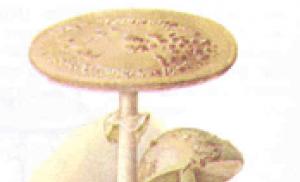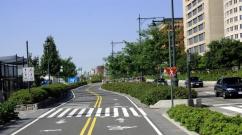Morozov is the teacher of Alexei Mikhailovich. Boyar Morozov: why the people disliked him
Boris (Ilya) Ivanovich Morozov(1590 - November 1, 1661) - Russian boyar, one of the largest landowners of his time, educator of Tsar Alexei Mikhailovich. The eldest son of Ivan Vasilyevich Morozov and Agrafena Elizarovna Saburova.
Biography
In 1615, Morozov was taken “to live” in the palace. In 1634, he was elevated to the rank of boyar and appointed “uncle” to Tsarevich Alexei Mikhailovich. He became even closer to the young Tsar when he married the Tsarina’s sister, Anna Ilyinichna Miloslavskaya. Until the end of his life, Morozov remained the closest and most influential person at the royal court. Contemporaries described him as an intelligent and experienced person in government affairs, with an interest in Western education. He probably managed to instill this interest in his pupil.
He owned 55,000 peasants and a number of iron and brick industries and salt mines.
A dark spot in Morozov's biography is the abuses that were one of the reasons for the Salt Riot of 1648. At this time Morozov was the head of several important orders(Big Treasury, Pharmacies and Taxes).
Patronage of unworthy relatives, the introduction of new taxes and farm-outs caused indignation against Morozov among the Moscow people.
In an effort to increase treasury revenues, Morozov cut employee salaries and introduced a high indirect tax on salt. These measures caused popular uprisings in May 1648. The rebels demanded Morozov's head. His closest assistants (the okolnichy P.T. Trakhaniotov and the clerk G. Larionov), as well as the judge of the Zemsky Prikaz L.S. Pleshcheev, were killed, he himself barely escaped in the royal palace.
The Tsar was forced to remove his favorite - Morozov was exiled to the Kirillo-Belozersky Monastery. This, however, did not change Alexei Mikhailovich’s attitude towards Morozov.
Four months later, Morozov returned to Moscow.
Upon his return, Morozov did not occupy an official position in the internal administration, probably because the Tsar wanted to fulfill his promise to the people.
At the same time, in 1649, Morozov took an active part in the preparation of the Council Code, a set of laws that lasted until the 19th century.
Morozov was with the Tsar all the time. When setting out on a campaign against Lithuania in 1654, the tsar granted Morozov the highest military rank - courtyard commander, commander of the “sovereign regiment”.
When Morozov died in 1661, the Tsar personally paid his last respects to the deceased in the church along with others. He was buried in the Chudov Monastery, the grave is lost.
Inheritance
Morozov had no heirs, and after his death the entire fortune passed to his brother Gleb, who, however, also died soon. The entire joint fortune went to Gleb’s young son, and in fact passed into the hands of his mother, the boyar Feodosia Morozova, known for her Old Believer activities.
Literature
- Acts of the household of the boyar B. I. Morozov. In 2 vols. - M.-L.: Publishing House of the USSR Academy of Sciences, 1940-1945.
- Zharkov V.P. Boyarin Boris Ivanovich Morozov - statesman of Russia in the 17th century. - M., 2001.
- Petrikeev D.I. Large serf farming of the 17th century. Based on materials from the estate of boyar B.I. Morozov. - L., 1967.
- Smirnov P.P. The government of B.I. Morozov and the uprising in Moscow of 1648 - Tashkent, 1929.
This man managed to become a prominent statesman, amass a huge fortune and, through his deeds, arouse real hatred among the common people. Boris Morozov is one of the most controversial figures in the history of pre-Petrine Russia.
Start of a career
Boris Ivanovich Morozov (baptized Ilya), born at the end of the 16th century, came from a family of Old Moscow aristocrats, rather battered by the reign of Ivan the Fourth.
Even before the Time of Troubles, the Morozovs became related to the Romanovs. Subsequently, this served them well: at the Zemsky Sobor of 1613, young Morozov was among those who signed the letter of election of Mikhail Fedorovich to the kingdom, and it was from here that the rise of the future oligarch began.
Soon, Boris and his brother Gleb, thanks to the support of their uncle-hero of the people's militia Vasily Morozov) received the position of steward, present at the sovereign's meal. The brothers were almost the same age as Tsar Michael, so they quickly found a common language with him, joined the ranks of his closest courtiers, and even managed to settle in the palace.
At the dawn of his activity, Boris lived relatively modestly: his total wealth with Gleb was about 400 hectares of land.
However, in 1618, after an unsuccessful attempt by the Poles to capture Moscow again, Morozov was granted another 300 hectares “for sitting under siege.” Boris Ivanovich took an active part in Russian-Persian and Russian-Swedish negotiations, and in 1633 he became a judge of the Workshop Chamber.
It is known that he enjoyed the favor spiritual father sovereign, Patriarch Philaret. In 1634, boyar Morozov was appointed tutor to the heir to the throne, Alexei.
On Olympus
Boris took care of the education of his ward: Alexey carefully studied the basics of religion, grammar, history, and gained an understanding of the natural sciences. Ultimately, the newly-minted ruler not only acquired a broad outlook, but also elevated Morozov to the pinnacle of power.
The marriage of Boris Ivanovich to the queen’s sister contributed to the further rapprochement between the tsar and his mentor.
Under Alexei, Morozov had colossal powers; at the same time he headed the Streletsky, Inozemsky, Apothecary orders, the Great Treasury order and the New Quarter - in fact, he was simultaneously the Minister of Defense, Health and Economy.
The state apparatus, which Morozov ruled, was distinguished by incredible corruption; the tsar's educator openly patronized all his friends and acquaintances. Moreover, he became the author of a number of new taxes, which earned him the indignation of the population.
On Boris’s initiative, a law was developed on the indefinite search for fugitive peasants (however, the boyar did not provide for ways to implement it).
Nevertheless, Morozov significantly cut spending on civil servants and carried out an effective reform of the army and local government. In 1648-1654, during the uprising of Ukrainians and Belarusians against Poland, he repeatedly received letters from Bohdan Khmelnytsky asking for help.
During the Russian-Polish War of 1654-1667, Morozov was the first governor and even participated in the capture of Smolensk and Vilno (although he did not live to see the end of hostilities).
In those years, Morozov's fortune reached its peak: the sovereign's comrade-in-arms owned 330 settlements in 19 counties - a total of 55,000 serf souls; Plus, he collected a magnificent library containing works of ancient Greek and Roman authors: Tacitus, Cicero and others.
Blue-blooded entrepreneur
Boris Morozov can rightfully be called the first Russian businessman. The Austrian diplomat Meyerberg argued that the king’s right hand had the same “greed for gold as he usually has a thirst for drink.”
Morozov first took up entrepreneurship in 1632, when, together with his brother, he supplied grain for the needs of the Russian army (then there was another war with the Polish crown). In general, the grain trade was of particular interest to Boris as a feudal lord, but the boyar did not limit himself to it.
Morozov traded in wine and vodka, and he sold most of the products to his own peasants in taverns, and sent the surplus outside the estate. Boris Ivanovich also became the founder of the domestic chemical industry: for the first time he was able to establish mass production of potash, a substance that is used in soap making, glass and fabric production, and leather dressing; Morozov potash was considered the best in the entire state.
Boris saw an urgent need for the development of metallurgy: in Zvenigorod district he organized a small factory where captured Poles worked. In addition, Morozov created brick factories and was engaged in fishing.
Boris's sphere of activity was not limited to Russia; he was one of the largest exporters of the Muscovite kingdom. After the death of the boyar, it turned out that he did not hesitate to lend money at a high interest rate: in other years, his profit from usury amounted to 85,000 rubles. Of course, Morozov periodically covered business expenses from government funds, which could not but affect the well-being of the country.
People's anger
The 17th century is not called “rebellious” for nothing. The extraordinary number of social and economic problems that fell on the heads of common people could not but lead to upheaval. What is surprising is that the population did not blame Alexei Mikhailovich for the troubles that had come: for him, the tsar remained God’s anointed, sinless and kind-hearted.
In this situation, the most logical thing would be to blame the chief sovereign adviser, Morozov, which the people did not fail to do.
The last straw was the government’s attempt to introduce a tax on salt - thus Boris Ivanovich wanted to replace several other taxes. In 1648, the famous Salt Riot began, during which an angry crowd broke into the Kremlin.
Only the tsar’s promise to exile Morozov calmed the rebels, and after some time Boris was imprisoned in the Kirillo-Belozersky Monastery. The careless boyar did not stay in exile for long, four months - Alexei's sympathy for his teacher still prevailed - and the next year Morozov returned to the capital to develop a set of laws - the Council Code.
Death of a Cardinal
Boris Morozov died in 1661 from numerous ailments that tormented him for about twenty years. The king personally escorted the deceased on his final journey. Boris had no children, and therefore the entire inheritance went to Gleb, who, however, also soon died.
The joint fortune of the Morozovs passed on to Gleb’s son, but in fact it was taken over by the noblewoman Feodosia Morozova, a famous Old Believer depicted in a painting by Vasily Surikov.
Morozov Boris Ivanovich
M Orozov, Boris Ivanovich - boyar. A peer of the king, M. was taken in 1615 “to live” in the palace. In 1634, he was elevated to boyar and appointed "uncle" to the prince. Mikhail Fedorovich entrusted his son to his care even at his death. From then on, M., in the words of the chronicler, “remained in the royal house relentlessly, leaving his house and belongings and all freedom and peace.” He became even closer to the young king when he married A.I. Miloslavskaya, sister of the queen. Contemporaries point out that the marriage of Alexei Mikhailovich with him took place according to the plan of M., who in advance had in mind to become related to the tsar and for this purpose allegedly tried to upset the proposed marriage of the tsar with his first bride from the Vsevolzhsky family. Until the end of his life, M. remained the closest and most influential person at the royal court, successfully defending his position against the party of boyars N.I., which was hostile to him. Romanova and Y.K. Cherkassky. Contemporaries and foreigners recognize his great intelligence and experience in government affairs; some of them (for example, Olearius) also note his interest in Western enlightenment. It is suggested that he managed to instill this interest in his pupil. Abuses in government, which were one of the reasons for the popular revolt of 1648, remain a dark spot on M.'s memory. At this time, M. was the head of several important orders (Bolshoi Treasury, Streletsky Prikaz and Novaya Cheti). It is impossible to establish how personally culpable he was for the abuses; but his patronage was enjoyed by obviously unscrupulous people, and therefore popular indignation was directed against him. The tsar was forced to promise the people to remove his favorite, and M. was expelled from Moscow to the Kirillo-Belozersky Monastery. All this did not at all change Alexei Mikhailovich’s attitude towards M. In his handwritten letters, the tsar instructs the abbot of the monastery to “protect Boris Ivanovich from all evil,” and very soon returns him to Moscow, taking advantage of the petition about this from the Moscow archers, the idea of which was instilled in them “from above.” ". Upon his return, M. did not occupy an official position in the internal administration, probably because the king wanted to fulfill his promise to the people in this way; but M. was with the tsar all the time, invariably accompanying him on his “close campaigns” through villages and monasteries near Moscow. According to Meyerberg, when poor health did not allow him to come to court, the king often visited him in secret and consulted with him about the most important matters. During the military campaigns of the Tsar, M. each time received the highest military appointment - as a courtyard commander of the right hand. When he died, in 1662, the Tsar “personally paid his last debt to the deceased in the church, together with others” (Meyerberg) and distributed large sums to the monasteries for his memory. According to Collins, M., after the Moscow riot, “became more lenient towards the people, and died, seeing the successful action of his advice, beloved by the sovereign and mourned by the people, except the nobility.” - M. was one of the largest landowners of his time. By assumption, he began his service as a not particularly sufficient nobleman; in 1628, he already had 500 acres of local land, and this salary was increased when he was appointed to Alexei Mikhailovich. Subsequently, he was granted the richest Nizhny Novgorod villages Lyskovo and Murashkino, in which there were up to 17 thousand dessiatines. In the year of M.’s death, there were up to 8 thousand households in his possessions or, according to Zabelin’s calculations, up to 80 thousand dessiatines. The surviving documents on the management of Morozov's estates depict M. as an exemplary owner-administrator and are a precious source for studying the economic life of Moscow Rus'. - See "Russia and Sweden in the 17th century" (Pommering's reports); Zabelin "The Great Boyar on His Patrimonial Farm" ("Bulletin of Europe", 1871 - 1872, January).
Other interesting biographies.
Serving oligarch
If there were a myriad of myths, multiplied by an even greater number of ambiguities, it was in the genealogies and biographies of the Old Moscow nobility before Peter I. The Morozov boyars, for example, claimed that they traced their ancestry to a certain Mikhail Prushanin. According to one version, he served Alexander Nevsky and even distinguished himself in the famous battle of 1240 with the Swedes on the Neva. According to another legend, the ancestor of the Morozovs came to Novgorod along with Rurik himself. However, the first person in the family, whose existence is documented, was the boyar Ivan, nicknamed Moroz, who served Dmitry Donskoy in Moscow - one of his sons died on the Kulikovo Field.
The exact date of birth of the richest of the Morozovs, Boris Ivanovich, is missing from the documents. It is known that he began his service immediately after the Time of Troubles in 1616, and a year later he got married; the name of his first wife, however, is also unknown. His signature appears on the document of the Zemsky Sobor of 1613 on the election of Mikhail Fedorovich Romanov as Tsar.
Apparently, Boris was orphaned quite early and, as the scion of a noble family, he and his brother were taken to live in the royal palace. The court physician, Englishman Samuel Collins, argued that the tsar was personally involved in the upbringing of Morozov. In his youth and young years, Boris undoubtedly enjoyed the patronage of his uncle, the former Kazan governor Vasily Petrovich Morozov, who played a prominent role in the militia of Minin and Pozharsky.
Despite all his nobility, however, Boris Morozov did not have any significant fortune. For the first ten years of his court service, he was a winemaker, pouring wine at royal dinner parties. Initially, he owned only 400 dessiatines of land (a dessiatine - 1.0925 hectares) half with his brother Gleb, and this is where his wealth began. After five years of service, Boris was personally given another 500 tithes. Over the next decade, he constantly served a little more and more. For example, in 1618, when the Polish king again tried to capture Moscow, but failed, Morozov was given 300 acres of land “for the siege.” By the time Boris Ivanovich was granted the rank of boyar in 1634, the size of his possessions had grown at least three times. However, he was still far from the largest land magnates of Muscovy, such as, say, the tsar’s closest relative, boyar Nikita Ivanovich Romanov, in whose personal possession, in addition to numerous villages, was the entire city of Romanov-Borisoglebsky, now Tutaev, on the Volga.In that era, however, as in all other times in Rus', in order to become one of the richest, you had to get into the inner circle of the sovereign, and even better, become related to the royal family. To begin with, Morozov became a guy, he was appointed to lead the education of the prince, the future sovereign of all Rus', Alexei Mikhailovich. And as soon as Alexei became king, in the same 1645 he made his beloved uncle the head of key departments; in those conditions, this actually meant that Boris Morozov became head of government. At the same time, from the royal possessions, Morozov was granted two of the richest Volga villages - Murashkino and Lyskovo with 23 villages in the Nizhny Novgorod district. With one stroke of the pen, the newly-made favorite received 3,500 peasant households and about 10 thousand male peasant souls.
Next to Morozov’s new Volga region possessions was the Makaryevsky Zheltovodsky Monastery, famous for the largest trade fair in Russia. In general, Nizhny Novgorod and the surrounding lands in the 17th century were among the most economically developed in the country. Unlike most other parts of the Muscovite kingdom, trade and crafts developed there much faster, the first manufactories appeared, and in some places even hired labor was used. Obtaining such a tasty piece of property here opened up wide prospects for enrichment for Morozov.
However, the growth of tycoon Morozov’s land holdings did not stop there. Soon the boyar strengthened his position at court, becoming a royal relative. He married Anna Miloslavskaya, the sister of Alexei Mikhailovich’s wife Maria, whom a caring man had personally selected for his pupil a little earlier. Now he no longer served the estate, but as a private person, Boyar Morozov bought them from Boyar Morozov, the Prime Minister.It was all the easier to do this because even in the middle of the 17th century, almost 30 years after the Time of Troubles, a lot of abandoned land remained in the central districts, where villages and hamlets had once been located. These lands belonged to the treasury, but did not bring any income. So the new head of government decided to privatize unprofitable assets. As usual, on favorable terms. In a similar way, the village of Kotelniki, in particular, fell into the hands of Morozov; now it is a fairly large village in the near Moscow region between Kapotnya and Dzerzhinsky. Some time later, when the war between Russia and Poland for Ukrainian lands began after 1654, the boyar obtained permission to resettle captured Belarusian peasants to the wastelands that belonged to him. By the way, such “privatization,” even with all its obvious corruption, benefited the state: in the same Kotelniki, in the 20 years after the village was transferred to Morozov, the size of arable land, which initially amounted to 20 dessiatinas, grew more than 30 times. Another example: in Vyazemsky district, on the site of 200 wastelands purchased from the treasury, 18 villages were rebuilt and populated.
Business the old Moscow way
The increase in Morozov's wealth was not limited to the privatization of land. The country was recovering after the Time of Troubles. And in Europe, a steady trend has emerged towards the development of the market, entrepreneurship, and monetary relations. New economic trends also reached Russia. It all started with trade - then not only merchants, but almost all segments of the population were engaged in it. A lower-ranking nobleman, going on government service to a distant district, took with him at least a piece of cloth for sale - some kind of increase to his meager salary. What then to say about the boyars with their colossal estates and weight at court - it was impossible not to turn around. The first known trading operation of Boris Morozov was carried out in 1632, when, during the outbreak of the war with the Poles, he and his brother Gleb supplied 100 quarters of grain, which amounted to 600 poods, or about 10 tons, for the needs of the Russian army.
Subsequently, the high official position of boyar Morozov contributed to the fact that his transactions with the treasury became one of the main sources of his personal income. During the next war, already in 1660, he and the merchant Guryev sold 10 thousand quarters of rye to the army. The boyar was especially interested in the grain trade because of his Nizhny Novgorod possessions. The difference in the price of grain grown here compared to Moscow was three to four times. Such profits prompted Morozov not only to sell the crops collected on his own lands, but to start buying them nearby and reselling them. To store purchased grain in Nizhny Novgorod, three huge granary yards with 38 granaries were built. Where there is bread, bread wine appears - vodka. Moreover, Morozov sold the products of his own distilleries to his own peasants in rural taverns, and supplied the surplus to the market outside the estate. Only in 1651, 10 thousand buckets of wine were sold from his Nizhny Novgorod possessions to Kazan (bucket - 12,299 liters).Morozov's trade was not limited to the domestic market. Part of the goods produced on his farm went abroad. Potash, which was obtained by repeatedly burning wood ash and was used, in particular, in the production of soap, was in particular demand in Europe at that time. In the middle of the 17th century, one Frenchman even proposed a whole scheme for the economic development of Russian resources: first, burn the forest and process it into potash, and then grow bread in the resulting fields - all, of course, for the sake of income on the foreign market.
Morozov, apparently, was aware of this idea and was very interested in potash production. His possessions contained the most large number potash enterprises in Russia. Typically, not only peasants (mostly poor people who were unable to pay normal rent), but also special hired workers—“business people,” as they were called then—were used in hazardous work. One barrel of potash cost about 35 rubles, and in the Morozov estates they were produced in hundreds. The boyar's main foreign partners were the Dutch. The Swedish resident in Moscow, Karl Pommerening, not without reason, argued that it was at the instigation of Morozov, who traded with Europe through the Netherlands, that the British were finally driven out of Russia in 1649 under the pretext of fighting the Cromwellian revolution. It is not difficult to guess who immediately took their place.Dutchman Andrei Vinius, who converted to Orthodoxy, was both an adviser to the government and a business partner of Boris Morozov, who headed that government. In the 1640s, they tried to build a metallurgical plant in Tula. Then this idea failed, but the boyar did not give up the idea of producing iron in Russia. In 1651, he invited a master from abroad who was supposed to organize a “mine in a mill” in his village of Pavlovskoye near Moscow. Since only the so-called swamp ore (deposits at the bottom of the swamps of brown iron ore - limonite) was used as a raw material, low-quality metal was obtained from it. Nevertheless, Pavlovsk “iron factories” continued to operate even after Morozov’s death.
The boyar opened another mine in the Volga region Lyskov. But before building a new plant here, he spent a whole year analyzing its possible profitability, studying the experience of the neighboring Makaryev Monastery. And in the end I decided not to skimp on the investment. Other production assets owned by the boyar included a linen “hamovny yard” in the village of Staroye Pokrovskoye, Nizhny Novgorod district, where Polish weavers worked. Morozov supplied the state treasury with yuft - specially treated waterproof leather, which was then used in the manufacture of army boots. In 1661, 76 poods of yuft were sold from the boyar estates for the amount of 1156 rubles 60 altyns.
Another significant source of income for the boyar was usury. Of course, Morozov did not have his own banking house, like, say, the Rothschilds, but he very willingly lent various amounts at interest. Small nobles borrowed relatively small amounts - 200, 400, maximum 600 rubles. This is how his clientele was formed among service people. Loans to foreign merchants, usually given when concluding trade transactions, were ten times larger than those taken by poor serving nobles. The largest known one-time loan amounted to 8 thousand rubles. The total number of Morozov's debtors could reach 80 people, and the annual amount of interest payments was about 85 thousand rubles. Even members fell into his debt networks royal family, as, for example, this happened with the Siberian prince Alexei Alekseevich.
And of course, in the conditions of a patrimonial state, which was the Muscovite kingdom, an important source of income was the position held in this state. Or rather, what could be obtained thanks to this position. One salary is 900 rubles. (in truth, it was a very considerable amount) the matter, of course, did not end there. Both Russian and foreign sources note an unprecedented increase in bribes in the period 1645-1648, when Morozov, taking advantage of the boundless trust of the new, still very young Tsar Alexei Mikhailovich, reached the highest official positions and concentrated almost all government administration in his hands. As the foreign traveler Adam Olearius testified, at this time a whole network was formed in Moscow, consisting of officials and engaged in various kinds of informal exactions from the population. Its links were led by Morozov’s confidants placed in the most important positions, and a chain of bribes led to the very top. As a result, for example, getting to Russian market only the foreign company that brought “the most gifts” personally to the head of government could.
In addition, Morozov, apparently, was an unsurpassed master of the development of government funds. Take, for example, the construction of fortifications in the Kirillo-Belozersky Monastery carried out precisely under the Morozov government. It was argued that the Swedes could allegedly go through this bearish angle towards Moscow from the north. All the way to Kirillov from the then Swedish-Russian border lay hundreds of kilometers of difficult terrain. And even if the river route was used for a short summer, the option of a massive invasion here was more hypothetical than real. At least, the Swedes themselves never decided to do this, and tourists who visit here are still surprised why the largest fortress in Europe was built in the Vologda region, which, like all the largest in Rus', was never used purpose. However, these walls were useful to Morozov personally: in the summer of 1648, he fled to the Kirillo-Belozersky Monastery to take refuge here from the Salt Riot, when Muscovites who disagreed with his management methods demanded the extradition and execution of the tsar’s favorite.
Expenses and risksThe exact size of Morozov's fortune is unknown and difficult to calculate. Apparently, even 350 years ago in Rus' it was not customary to show all your income. Morozov’s immunity was the “glory and power” of the richest and most influential person after the Tsar and Patriarch. According to Meyerberg, after his death the boyar left “a countless number of silver rubles, gold chervonets and Joachimthalers.” Morozov’s true wealth can be judged by the fact that 10 thousand rubles were spent on just one of the many alms distributions in memory of him after his death. Actually, it is by spending, both now and then, that one can indirectly judge real income.
But not all wealth, especially in the 17th century, was measured only in money. Take, for example, the inventory of table supplies preserved in Morozov’s economic archives, intended for his personal use and for treating distinguished guests. In January 1652, he wrote to his clerk Andrei Dementyev in the village of Pavlovskoye near Moscow, ordering him to salt and prepare 180 pork carcasses for the Tsar’s ceremonial reception. The meat was transported in 37 carts from another district, and in the end it was discovered that two pounds were missing - one cart was lost along the way. Judging by the surviving documents, the boyar, who was quick to reprisal, did not punish anyone for this “shrinkage-shrinkage” - the loss of 32 kg of meat was apparently so insignificant for him. Another inventory, dating back to December 1650, testifies to the size of the natural rent, which the peasants of only one village of Troitsky in the Nizhny Novgorod district were supposed to put on the boyar table for Christmas: “from each smoke” they were supposed to take one goose, one chicken, and even pudu of "pork meat, good and grain." Only one modest batch of live fish, which, at the whim of Morozov, was transported from the Volga to Moscow, could consist of 7 sterlets, 69 pikes and 163 crucian carp. According to another inventory, eight barrels of wine were delivered “for boyar use” - again on the occasion of the “sovereign arrival” to visit Boris Ivanovich.
In Moscow and the immediate Moscow region, Morozov had at least four personal residences. Some chambers, as expected, are right in the Kremlin, next to the royal palace and the Chudov Monastery. Another farmstead was located in the Vorontsov Field area; after the death of the boyar, according to his order, an almshouse was established here. The main country residence was the village of Pavlovskoye, now Pavlovskaya Sloboda, where it is now better to go through New Riga, but before - in the time of Morozov - we went through Tushino. In Pavlovskoe there was an entire agricultural city that served the boyar and his crowded courtyard. In addition to the already mentioned ironworks, gardens were laid out here and ponds with fish were built, apparently so as not to have to travel to the Volga again. The king and royal nobles could also come here for dinner parties. And Patriarch Nikon himself, a native of the Makaryevsky Zheltovodsky Monastery, soon began to build his residence along the same road - in New Jerusalem. The modest estate in Kotelniki served as a hunting lodge - Morozov was a passionate fan of falconry, to which he taught Tsar Alexei Mikhailovich. But in the village of Gorodnya on the Volga near Tver (it is still located behind Zavidovo on the Moscow-St. Petersburg highway), the boyar built an entire wooden castle. It has survived to this day in the description of the Dutchman Nicholas Witsen, and it is known that Morozov settled here when in 1648 he decided to move from exile in Kirillov closer to the capital.
It is difficult to imagine a rich person without a means of transportation appropriate to his status. Bentley had not yet been invented, so the boyar had to be content with the carriage that Alexei Mikhailovich personally gave him on the occasion of his wedding. The carriage's interior was upholstered in gold brocade, lined with expensive sables, and the wheel rims and other external decorations were made of pure silver. It is a pity that the boyar was not able to use the luxurious gift for long: in June 1648, participants in the Salt Riot turned the carriage into a pile of wood chips in a matter of minutes. The entire richly furnished house of Morozov in the Kremlin was destroyed. With the words “this is our blood,” the rebels “chopped, smashed and stole everything that was there, and what they couldn’t take away, they ruined.” The boyar himself, in order to save his life, had to forget about the luxurious ride and run on horseback at full speed.
However, wealth and luxury were soon restored and became even greater. Having left official government posts, the boyar, albeit to a lesser extent than before, still retained influence on the tsar. He could still "resolve issues" at the highest level. Only now Morozov had much more time to take care of his own farming. The greatest prosperity of his patrimonial empire occurred precisely in the 1650s.
Abnormal feudal lordAccording to history textbooks, we are accustomed to believe that the boyar is the one with a belly and a long beard, in a high throated hat and a long caftan, sitting next to the king on a bench in the Faceted Chamber and with all his might resists everything new and progressive. As the clerk of the Ambassadorial Prikaz, Grigory Kotoshikhin, who was recruited by Swedish intelligence and fled to the West, informed his customers, “and other boyars, having set their guards, do not answer anything, because the tsar favors many of the boyars not according to their intelligence, but according to their great breed, and many of They are not literate or educated." Such a description, however, does not always agree with reality. And there were quite a few exceptions. Among Morozov’s consumer spending, for example, along with luxury goods, the purchase of books also occupied a prominent place. In his home library, along with publications in Russian, which were published by the Moscow Printing House, there were books in Latin ordered from Lithuania, including political works by Cicero and historical works by Tacitus.
Unlike many other large landowners, boyar Morozov personally managed his huge farm. He corresponded with clerks, controlled their activities, resolved internal disputes that arose, extinguished conflicts, punished and rewarded, and intervened in every detail. If not every day, then certainly several times a week, letters came from his pen with more and more new orders and instructions. His colossal possessions had a rigid centralized management system that copied the vertical structure that existed at the state level. To coordinate the activities of individual parts of the economy in Moscow, a special private order was created, the apparatus of which collected information about the state of affairs on the ground, carried out general control and accounting, prepared regular reports to the owner and distributed correspondence. Morozov's orderly people had great power, they formed a single team and had significant weight not only in the boyar estate, but also beyond its borders. The main performers were local clerks and their subordinate bailiffs. Their functions were defined in special orders. The clerk was responsible for the boyar household and crafts, collected peasant dues, monitored the execution of corvee duties, and carried out the functions of the court of first instance. The local administration had to report all more or less significant details to the center.
And here’s another interesting thing: for all his unconditional rigidity and authoritarianism, Morozov was not a serf owner. On the contrary, he even resisted the introduction of serfdom in every possible way. Judge for yourself: the peasant dues did not constitute a decisive share in his income. Most cash, as far as one can judge, came from trade and crafts. Moreover, with such a number of peasants, it was possible to take from them much less than what other feudal lords collected. It is known that, luring homely owners into his possessions, Morozov even for some time provided them with complete exemption from quitrent and other duties. Some neighboring small landowner with his measly ten households could sometimes turn out to be poorer than the peasant who lived outside strong man"And collecting rent from ten people is not at all the same as from ten thousand. Living in the estate of a tycoon like Morozov was clearly better: you have to pay less, and a loan, if necessary, can be easily obtained, and protection from other strong or simply dashing people, too. So the peasants fled - not so much to the Don, but to large boyar latifundia. In turn, the nobles, who formed the basis of the militia in the Moscow kingdom, constantly demanded that the state prohibit this transition, that is, in fact, to introduce serfdom. As a result, under pressure from the nobility, the magnates were forced to yield, this was the price for the loyalty of the army in the conditions of the rebellious century. But even after the adoption of the Council Code of 1649, which formally completed the establishment of serfdom in Russia, there were specific mechanisms for the search and return of fugitives. the previous owners were not registered for at least another decade. And here, of course, it could not have happened without Morozov.
At the end of his life, one of the richest people in Russia suffered from gout and water sickness. At his service, of course, were the best foreign doctors from the Pharmacy Department, but, alas, everything has its limit. Boris Morozov died in 1661. Even in last year life, rarely getting out of bed, he tried to control affairs in his own huge household. And not only because he could no longer live any other way. There was no one to hand over the management of the huge farm - boyar Morozov never had any children. As one of his contemporaries wrote, “he saw himself as a father many times,” but the children, apparently, died in infancy.As a result, the circle of heirs turned out to be small. A year later, brother Gleb died, and after some time, Boris Ivanovich’s widow, Anna Morozova-Miloslavskaya, also died. Immediately after her death, Tsar Alexei Mikhailovich took the lion's share of the villages of Pavlovskoye, Murashkino and Lyskovo. To manage them at the state level, the Order of Secret Affairs was created.
A considerable part of the remaining possessions passed to Gleb’s widow, a famous figure church schism Feodosia Morozova-Sokovnina and her son Ivan. But soon they were both thrown into prison, where they ended their lives. Moreover, some still believe that the reason for this was not so much religious disputes as an excessively large piece of wealth that went to a fairly young widow. All property of those arrested was confiscated. Thus, the economic empire of boyar Boris Ivanovich Morozov, which grew thanks to the proximity of this head of government to the state treasury, turned out to be absorbed by the state.
Boris Ivanovich
The Russian boyar B.I. Morozov was the educator of Tsar Alexei Mikhailovich and in the first years of his reign headed the government (until 1648).
He was a maternal relative of Tsar Mikhail Fedorovich. He began serving as a steward in 1616. In 1633, he was appointed “uncle,” that is, tutor of Tsarevich Alexei. He tried to give his ward a good, comprehensive education and even ordered him dresses in the European style.
In 1634 Morozov received the boyars. After his accession to the throne in 1645, he headed several orders at once. In 1648, he wooed Tsar Maria Ilyinichna Miloslavskaya, and then he himself married her sister. As a result, he became a close relative of Tsar Alexei.
Morozov was one of the initiators of the introduction of a tax on salt, which caused in 1648. At the request of the rebels, the boyar was expelled from the capital, but not for long. During the Russian-Polish War, he headed the Dvorovy Regiment, which guarded the Tsar. Almost until his death in 1661, he sat in the Boyar Duma.













